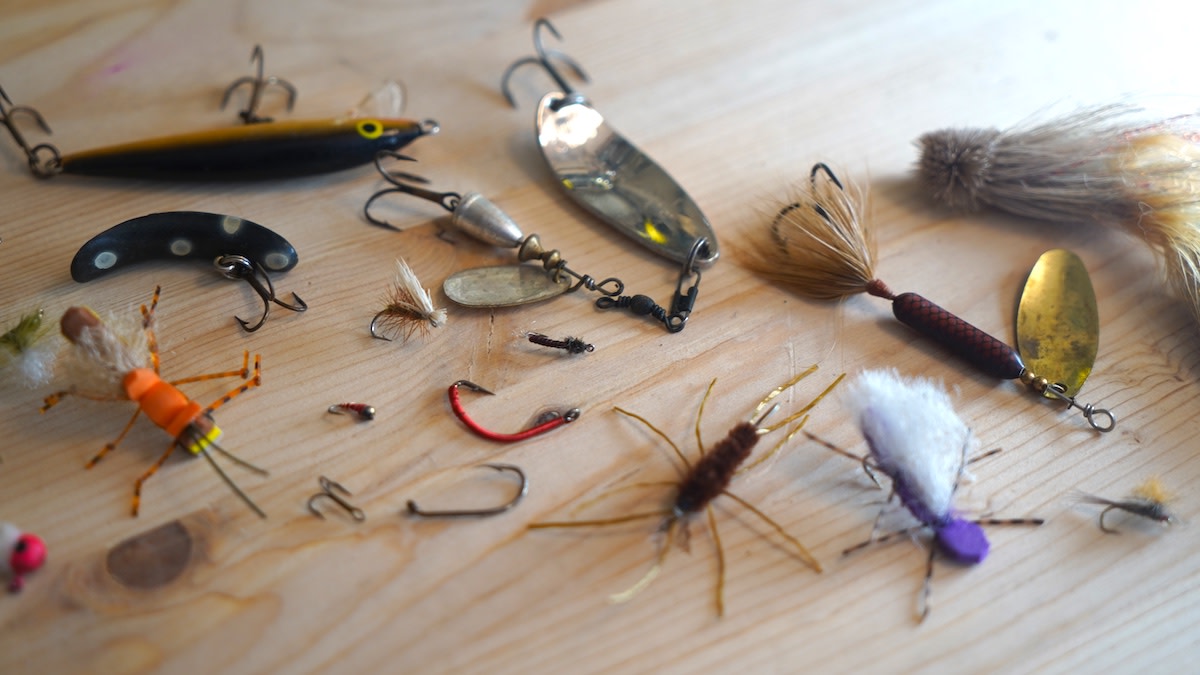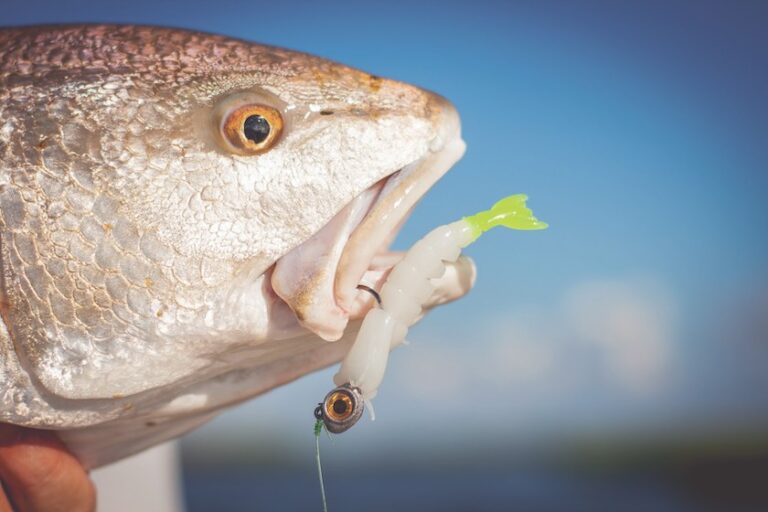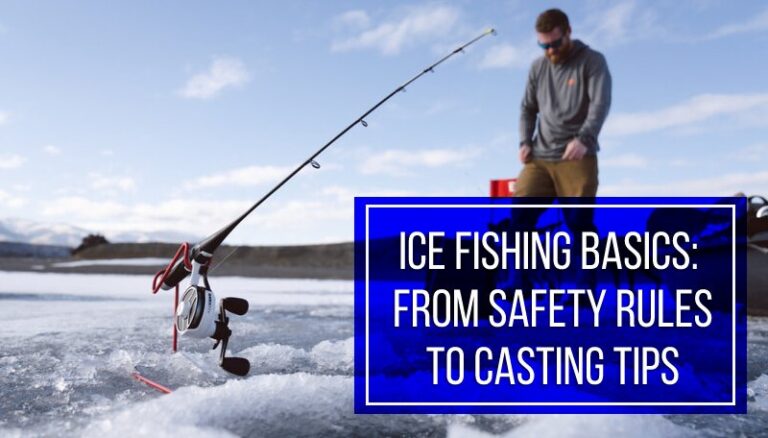To locate baitfish while flats fishing, scan the water surface for disturbances or ripples caused by feeding baitfish. Baitfish are often found near structures such as grass beds, mangroves, or drop-offs.
In addition, look for diving birds as they often indicate the presence of baitfish. Look for signs of baitfish activity such as surface splashes, jumping fish, or baitbirds hovering over an area. Pay attention to changes in water color and temperature, as baitfish are attracted to areas with favorable conditions.
Cast your bait or lure near these areas to increase your chances of catching fish.

Credit: www.themeateater.com
Understanding Baitfish Behavior:
Understanding baitfish behavior:
When it comes to flats fishing, locating baitfish is essential for anglers seeking a successful day on the water. Baitfish serve as a primary food source for larger predatory fish and are an indication of an active and thriving ecosystem.
Understanding the behavior of baitfish can greatly improve your chances of finding and catching the trophy fish you’re after. Let’s explore the feeding patterns and factors that influence the movement of baitfish.
Feeding Patterns Of Baitfish:
- Baitfish are primarily opportunistic feeders, constantly on the lookout for food sources. They tend to be more active during certain times of the day, such as dawn and dusk, when their chances of evading predators are higher.
- Most baitfish species feed on plankton, small insects, and other microscopic organisms found in the water column. They often congregate in areas with abundant food sources, such as near vegetation, eddies, or drop-offs.
- Baitfish may exhibit different feeding patterns based on their species and the specific prey they consume. Some species, like shad, have a filter-feeding mechanism, while others, like minnows, prefer to dart and chase their food.
Factors Affecting The Movement Of Baitfish:
- Water temperature plays a significant role in baitfish movement. They tend to seek out water within their preferred temperature range, which can be influenced by factors such as sunlight, currents, and depth. Warmer water temperatures might push baitfish closer to the surface, while cooler temperatures can drive them towards deeper areas.
- Oxygen levels in the water are crucial for the survivability of baitfish. They rely on dissolved oxygen to respire and often gather around areas with higher oxygen concentrations, such as weed beds or where water mixes.
- Predator-prey dynamics influence the movement of baitfish. They will often seek refuge in areas with plenty of hiding spots, such as submerged structure, vegetation, or shallow bars, to avoid being consumed by larger fish.
- Tides and currents are important factors to consider when locating baitfish. They influence the movement of both prey and predators, creating optimal conditions for baitfish to gather in certain spots.
- Seasonal changes can also impact the behavior of baitfish. During spawning seasons, they might aggregate in specific areas to reproduce, while during colder months, they may migrate to warmer waters.
Understanding the feeding patterns and factors affecting baitfish movement will give you a valuable advantage when it comes to locating them during flats fishing. By paying attention to these behaviors and environmental factors, you can increase your chances of success on the water.
So, gear up, study the water conditions, and keep your eye out for bustling schools of baitfish – the gateway to reeling in that trophy fish!
Techniques For Locating Baitfish:
When it comes to flats fishing, locating baitfish is a key aspect of finding the fish you’re targeting. Baitfish serve as prey for larger predatory fish, making them an excellent indicator of where the action is happening. Fortunately, there are several effective techniques that can help you locate baitfish and increase your chances of a successful fishing trip.
Here are three proven methods to consider:
Observing Bird Activity As An Indicator:
- Seabirds such as seagulls and pelicans can often be seen diving and swooping down near schools of baitfish. This behavior is a reliable indication that baitfish are present in the area. Keep an eye out for birds hovering or diving into the water, especially if they are grouped together.
- Pay attention to the direction in which the birds are flying. They generally follow baitfish schools, so if you notice a pattern or a consistent movement of birds in a particular direction, it’s likely that baitfish are leading them to food-rich areas.
- Don’t overlook smaller birds like terns and cormorants, as they also feed on baitfish and can lead you to productive fishing spots.
Identifying Surface Disturbances Caused By Baitfish:
- Baitfish schools often create noticeable surface disturbances as they swim near the water’s surface. Look for telltale signs such as flickering water, ripples, or sudden splashes. These disturbances can indicate the presence of baitfish below the surface.
- Keep an eye out for disturbances that happen in a specific area and reoccur after a short interval. This could be a sign of baitfish being chased or attacked by larger predatory fish, such as snook or redfish.
- Look for changes in water color or slight changes in surface texture, as these can indicate baitfish schools moving through the area.
Watching For Baitfish Schools On The Sonar:
- Using a sonar device can be a valuable tool in locating baitfish schools. Look for distinct arches or marks on the sonar screen, which represent the presence of fish.
- Pay attention to the depth at which the baitfish are located. While they can be found at various depths, baitfish tend to concentrate on certain depth ranges that offer them protection and access to food.
- Look for irregular shapes or denser clusters on the sonar screen, as these can indicate larger baitfish schools. The presence of baitfish schools can also attract larger predatory fish in the vicinity.
By employing these techniques, you can improve your ability to locate baitfish and increase your chances of finding the fish you’re targeting. Remember to remain observant and adaptable, as baitfish movement can change throughout the day based on factors such as tides and feeding patterns.
Good luck and tight lines!
Locating Baitfish Using Environmental Factors:
When it comes to flats fishing, one of the key elements to success is locating baitfish. Baitfish are the primary food source for gamefish, so finding them increases your chances of hooking into a big catch. To effectively locate baitfish, it’s important to pay attention to various environmental factors.
These factors include water temperature and clarity, identifying structure and cover that attract baitfish, and understanding the influence of tides and currents on baitfish movements.
Paying Attention To Water Temperature And Clarity:
- Water temperature plays a crucial role in the distribution and movement of baitfish. Warmer water temperatures usually indicate the presence of more baitfish, as they thrive in these conditions. Cooler temperatures may cause baitfish to migrate to deeper areas or seek out warmer spots near structures.
- Clear water is often a sign of good baitfish activity. Baitfish prefer clear, clean water as it provides better visibility and reduces the risk of predation. On the other hand, murky or muddy water may deter baitfish, making it more challenging to locate them.
Identifying Structure And Cover That Attract Baitfish:
- Baitfish are drawn to structure and cover, as these areas offer protection from predators and provide ample food sources. Look for features such as submerged rocks, reefs, grass beds, and mangroves. These areas create hiding spots for baitfish and attract larger gamefish that prey on them.
- Pay attention to changes in the bottom contour, as irregularities like drop-offs, channels, and sandbars can create ideal feeding grounds for baitfish. These areas provide a mix of shallow and deeper water, which attract baitfish seeking refuge and feeding opportunities.
Understanding The Influence Of Tides And Currents On Baitfish Movements:
- Tides and currents greatly impact the movement patterns of baitfish. As tides rise and fall, baitfish often follow the outgoing or incoming water, taking advantage of the abundance of food being carried along. Understanding the tidal flow and timing is crucial for locating baitfish.
- Strong currents can concentrate baitfish in specific areas, such as points, eddies, or tidal rips. These areas create dynamic feeding opportunities as gamefish congregate to take advantage of the baitfish being swept along. Pay attention to these potential hotspots during changing tides.
To successfully locate baitfish while flats fishing, it is essential to consider the environmental factors influencing their presence. By paying attention to water temperature and clarity, identifying structure and cover that attract baitfish, and understanding the influence of tides and currents, you can greatly increase your chances of finding and hooking into a multitude of gamefish.
So next time you hit the flats, remember to keep an eye on these factors, and success will be within reach.
Using Sight And Sound To Locate Baitfish:
When it comes to flats fishing, being able to locate baitfish can dramatically increase your chances of a successful catch. Baitfish such as mullet, sardines, and pilchards are often the primary food source for predatory fish like tarpon, snook, and redfish.
By honing your ability to spot and hear the presence of baitfish, you can effectively narrow down your fishing spots and improve your overall success rate. Here’s how you can use sight and sound to locate baitfish while flats fishing:
Spotting The Movement Of Baitfish Near The Surface:
- Look out for any sudden disturbances or movements near the surface of the water. Baitfish tend to swim in schools, and their rapid movements can create noticeable ripples or wakes on the water.
- Keep an eye on the surface for any flickering or flashing movements. Baitfish often jump or skip across the water, creating quick bursts of shimmering flashes that can catch your attention.
- Scan the horizon and look for any birds hovering or diving in a particular area. Birds, especially seabirds like seagulls or pelicans, can be a reliable indicator of baitfish activity. They are often attracted to the feeding frenzy caused by predatory fish chasing baitfish near the surface.
Listening For Splashes And Disturbances Caused By Feeding Baitfish:
- Pay attention to any splashes or disturbances that you hear while on the water. The sound of baitfish suddenly leaping out of the water or fish feeding on them can be a significant clue to their presence.
- Listen for repetitive splashes in a specific area, as this can indicate a larger school of baitfish swimming close to the surface. Predatory fish hunting baitfish tend to create multiple splashes in quick succession, causing a distinct pattern of sounds.
- Keep your ears open for any commotion caused by birds diving into the water. When birds spot baitfish near the surface, they dive down to catch their prey, creating a noticeable splash. Following the birds can lead you to the location of the baitfish.
Using your senses to locate baitfish can provide you with valuable information and put you in the right place at the right time. By spotting their movements near the surface and listening for splashes and disturbances, you can successfully target areas where baitfish are present.
Remember to exercise patience, observe your surroundings closely, and trust your instincts when it comes to locating baitfish while flats fishing.
Locating Baitfish In Different Seasons:
Understanding seasonal changes in baitfish behavior:
During different times of the year, the behavior of baitfish can vary greatly. To be successful at locating baitfish while flats fishing, it’s important to understand these seasonal changes and make adjustments to your fishing techniques accordingly. Here are some key points to keep in mind:
- Spring:
- Baitfish are often found in shallower waters closer to the shoreline.
- Look for signs of baitfish activity such as surface disturbances or birds diving.
- Target areas with structure like grass beds or mangroves, as baitfish tend to seek cover in these areas.
- Use smaller, more natural-looking baitfish imitations as the fish are actively feeding.
- Summer:
- Baitfish may move to deeper waters to find cooler temperatures.
- Look for baitfish in areas with strong currents or structures that create shade.
- Use lures or baits that mimic injured or struggling baitfish to attract feeding predator fish.
- Fish during early mornings or late evenings when water temperatures are cooler and baitfish are more active.
- Fall:
- Baitfish start to migrate and congregate in larger schools.
- Look for baitfish near structure or drop-offs where they can take shelter.
- Target transitional areas such as oyster bars or deep channels where baitfish can be easily trapped.
- Use topwater lures or suspending baits to imitate the baitfish behavior and trigger strikes.
- Winter:
- Baitfish tend to move to deeper waters seeking warmer temperatures.
- Look for baitfish near deeper channels, bridges, or warm-water discharges.
- Slow down your presentation and use small, natural-colored baits to entice slow-moving fish.
- Focus on areas with nearby structure where baitfish can take cover from predators.
Adjusting techniques based on baitfish movements during different times of the year:
To increase your chances of locating baitfish while flats fishing, it’s crucial to adjust your fishing techniques based on their movements throughout the seasons. Here are some tips to help you adapt:
- Stay observant: Pay attention to signs of baitfish activity such as birds diving, surface disturbances, or baitfish jumping out of the water.
- Use your electronics: Utilize your fishfinder or sonar to locate schools of baitfish, which can often be seen as dark spots or arches on the screen.
- Experiment with different depths: Baitfish may move to different depths depending on the time of year, so try fishing at different depths until you find success.
- Vary your retrieve: Adjust your retrieve speed and pattern to match the behavior of the baitfish. Sometimes a fast retrieve can trigger reaction strikes, while other times a slow and steady retrieve may be more effective.
- Consider the water temperature: Baitfish are sensitive to water temperature, so be aware of the fluctuations and adjust your fishing spots and techniques accordingly.
- Stay versatile: Be prepared to switch between different baitfish imitations and lure types based on the preferences of the target species and the behavior of the baitfish.
By understanding the seasonal changes in baitfish behavior and adjusting your techniques accordingly, you can significantly improve your chances of locating baitfish while flats fishing. Remember to be observant, experiment, and stay versatile to increase your chances of landing a successful catch.
Tips For Locating Baitfish In Specific Flats Fishing Locations:
Locating Baitfish In Grassy Flats:
Grassy flats provide excellent hiding spots for baitfish, making them a prime location for predators to search for an easy meal. Here are some tips to help you locate baitfish in grassy flats:
- Look for signs of feeding activity: Observe the water closely for any signs of fish breaking the surface or birds diving into the water. These indicate the presence of baitfish and the predatory fish that are chasing them.
- Focus on areas with submerged grass beds: Baitfish often seek shelter within submerged grass beds, as they provide protection from larger predators. Scan the flats for areas where the grass is denser, as this is likely where baitfish will congregate.
- Pay attention to tidal movements: Baitfish tend to move with the tides, so understanding the timing of the tides can help you locate them more effectively. Search for feeding opportunities during the incoming or outgoing tide, as baitfish may gather in specific areas during these times.
- Use polarized sunglasses: Polarized sunglasses can greatly enhance your vision in the water, allowing you to spot baitfish more easily. Look for flashes of silver or movement in the water, as these are indications that baitfish are present.
- Watch for disturbances in the water: Keep an eye out for disturbances in the water, such as ripples or wakes, as these can indicate the presence of baitfish being chased by predators. Cast your bait or lure towards these disturbances to increase your chances of a successful catch.
Finding Baitfish In Sandy Flats:
Sandy flats may not provide as much cover for baitfish as grassy flats, but they can still be productive areas for locating them. Here are some tips to help you find baitfish in sandy flats:
- Look for channels or troughs: Baitfish tend to stay close to channels or troughs in sandy flats, as these areas provide structure and protection. Search for areas where the sand meets deeper water, as baitfish may be congregating there.
- Pay attention to baitfish behavior: Baitfish often swim in schools and display noticeable movements when they are being pursued by predators. Keep an eye out for baitfish jumping out of the water or swimming frantically, as these behaviors can indicate the presence of larger fish.
- Use a fish finder: If you have access to a fish finder, use it to locate baitfish in sandy flats. Look for areas with concentrations of baitfish and target those spots for your fishing efforts.
- Look for natural attractors: Baitfish are often attracted to structures such as rocks, fallen trees, or sandbars. These areas provide cover and can concentrate baitfish in one spot. By locating these attractors, you increase your chances of finding baitfish as well.
- Cover more area: Sandy flats can be vast, so it’s essential to cover a larger area when searching for baitfish. Move around and explore different sections of the flat until you find signs of baitfish activity.
Searching For Baitfish In Rocky Flats:
Rocky flats offer numerous hiding spots for baitfish, making them attractive to predatory fish. To locate baitfish in rocky flats, consider the following tips:
- Look for crevices and cracks: Baitfish often seek shelter in the crevices and cracks of rocky flats. Scan the area for any openings or gaps between rocks where baitfish may be hiding.
- Focus on areas with current or structure: Baitfish are often found near areas with current or structure. Look for rocks that create eddies or areas where the current changes direction. These spots can provide a rich food source for baitfish, attracting them in large numbers.
- Observe the water surface: Keep an eye on the water’s surface for any disturbances or flashes that indicate the presence of baitfish. Rocky flats may create turbulent areas, causing baitfish to break the surface as they try to avoid predators.
- Look for baitfish shadows: The sun’s position can cast shadows on the water, revealing the presence of baitfish. Look for flickering shadows or dark spots beneath the surface, as these can give away the location of baitfish.
- Use a depth finder: If you have access to a depth finder, use it to locate rocky structures where baitfish may congregate. These structures provide cover and a food source, making them ideal spots to find baitfish.
Remember, locating baitfish in specific flats fishing locations requires patience and observation skills. By paying close attention to the signs and following these tips, you can greatly increase your chances of finding baitfish and having a successful fishing trip.
Conclusion
Understanding how to locate baitfish while flats fishing can greatly enhance your chances of having a successful fishing trip. By paying attention to the various signs and indicators of baitfish presence, such as bird activity, disturbances on the water’s surface, or the appearance of weed lines, you can hone in on the areas where predatory fish are likely to be feeding.
Additionally, using technology like fishfinders or sonar can provide valuable information on the depth and location of baitfish schools. Equipping yourself with the right knowledge and tools will give you a competitive edge and increase your chances of hooking into some trophy fish.
So next time you’re out on the flats, keep these tips in mind and get ready for an exciting and fruitful fishing adventure. Happy fishing!



